A Day with the Huawei Mate 30 Pro: Kirin 990 and 7680 FPS Slow Motion Tests
by Dr. Ian Cutress on September 23, 2019 4:00 AM EST- Posted in
- Smartphones
- Huawei
- Kirin 990
- Mate 30 Pro
- 7680fps
Daylight Photography Hands-On
One of the benefits of being a photography luddite is that the quality of smartphone cameras, both the hardware and the software, has come on leaps and bounds over the last decade. Smartphone photography is something that new entrants to the smartphone scene have difficulty on, because the main players are on their ninth or tenth generation of AI-accelerated photography features. If you are new with your first/second generation device, it is hard to play catch-up. But for today, Huawei is one of the companies leading the scene in computational photography.
For my short photography test, I’m pitting the Huawei Mate 30 Pro against my trusty P30 Pro. I also have the ROG Phone II here for an upcoming test, so I’ve thrown that in as well. I took seven day-time scenes from a trip to compare and contrast. All three phones are running in Auto mode, taking 10/12MP shots with pixel binning, with AI enabled.
Position 1: A Church
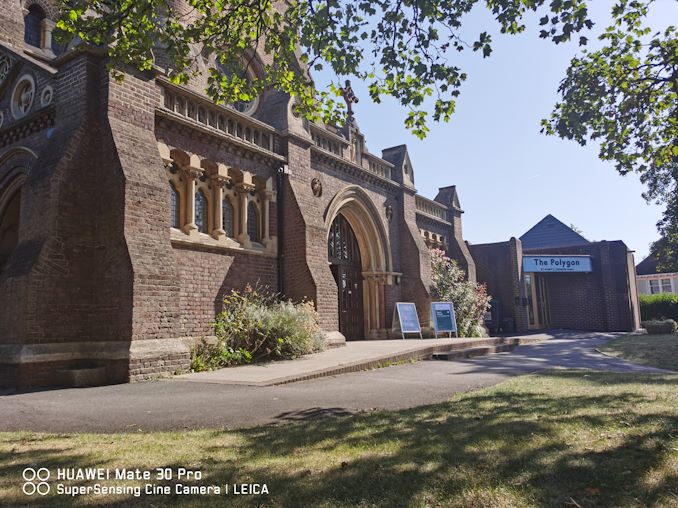

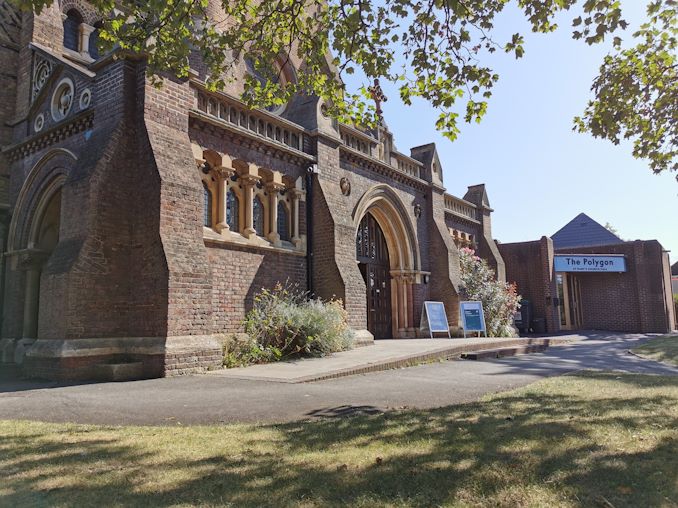
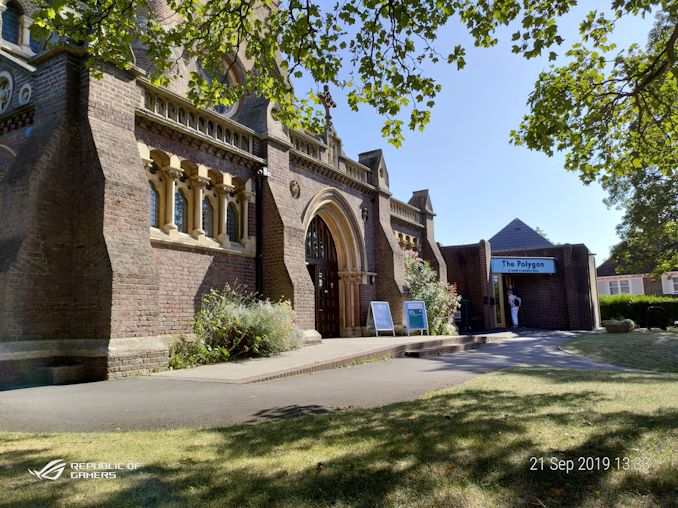
Mate 30 Pro | P30 Pro | ROG Phone II
Here we can see that the Mate 30 Pro is a little hazier around the words on the right, but the bricks on the wall of the Mate 30 Pro have a lot less noise on them. The ROG Phone II darkens the shadows quite a bit, whereas the two Huawei phones blend the scene a lot better.
Position 2: Clock Tower
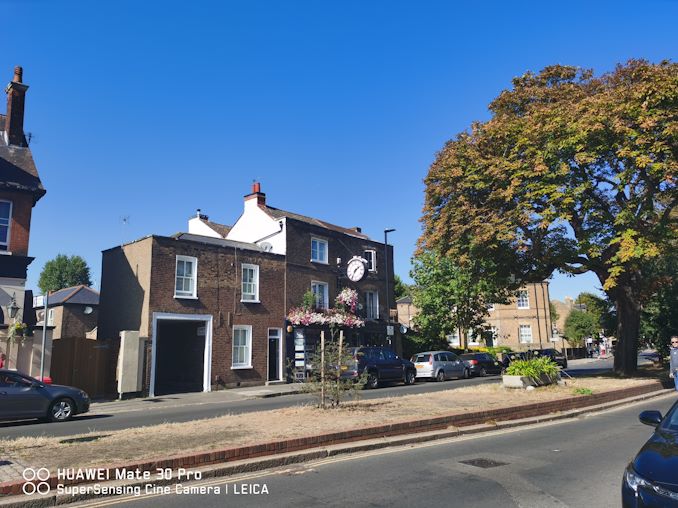

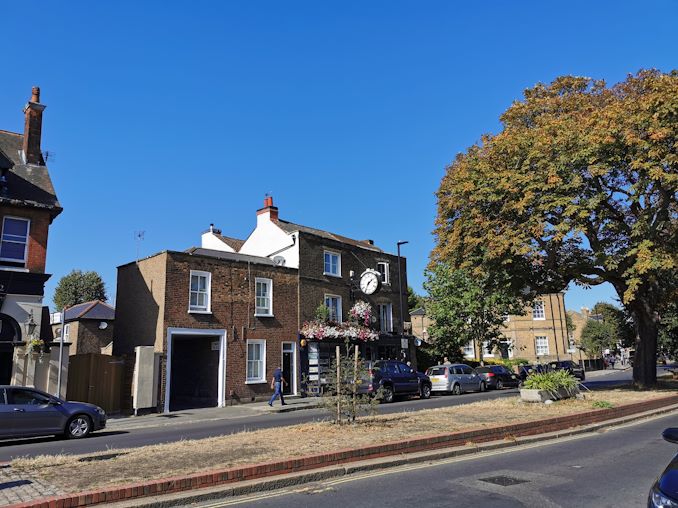

Mate 30 Pro | P30 Pro | ROG Phone II
In this instance the P30 Pro is darker on the brickwork than the Mate 30 Pro, however the Mate 30 Pro is a bit more hazier with less detail. Both phones used ISO 50 for this one, with the Mate 30 being at 1/4219s shutter speed compared to 1/3425s.
Position 3: Ealing Studios
This photo had a slight angle towards an incoming sun, to give a more difficult scene.
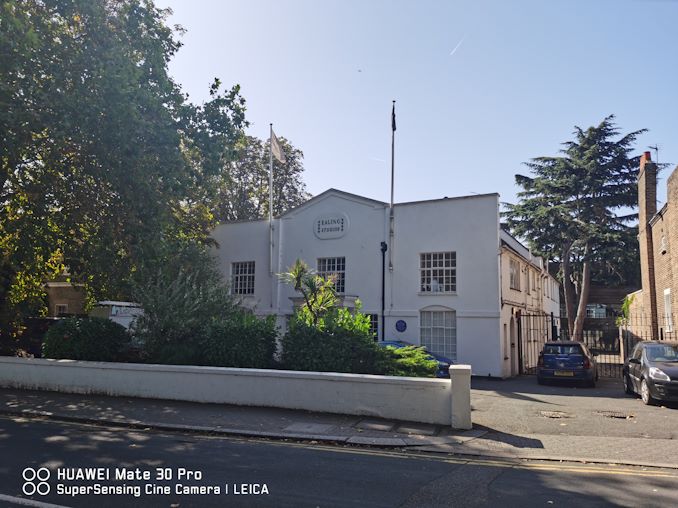

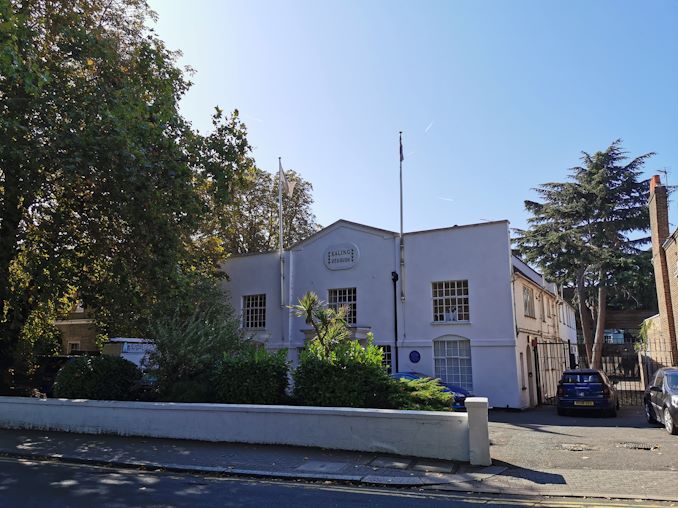
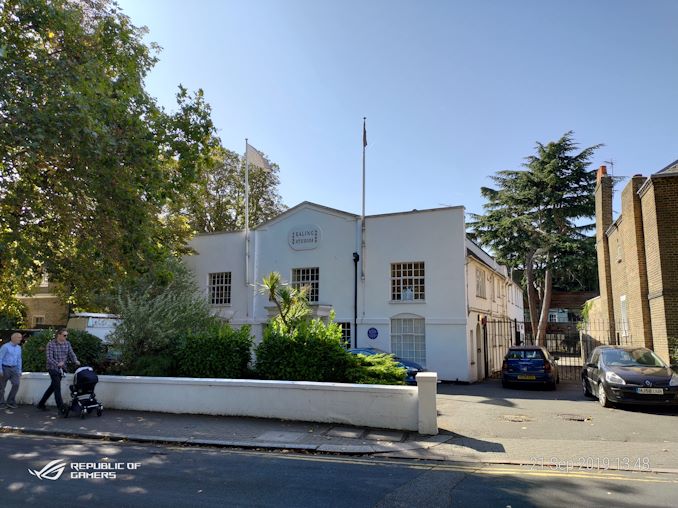
Mate 30 Pro | P30 Pro | ROG Phone II
Again we see that on the P30 Pro, compared to the Mate 30 Pro it is a little darker and in this case the building looks a lot bluer as a result. The sidewalk on the P30 Pro also looks blue, but on the Mate 30 Pro is truer to the real color.
Position 4: Macaroons
The artificial light here gives an interesting perspective – all three phones typically refresh at 60 Hz, but with the UK on its 50 Hz lighting system combined with a rolling shutter means that we get those wavy lines across the screen. Most modern smartphones now have a way of dealing with this, by detecting the light differential and synchronizing up. It still takes a good 5 seconds or so for the detection to work and kick in, however.




Mate 30 Pro | P30 Pro | ROG Phone II
The Mate 30 Pro makes the colors pop a bit more than the other two, but again we are getting some haziness in the camera and a lack of edge clarity in the distance or even on the yellow macaroons near the front.
Position 5: Ice Cream




Mate 30 Pro | P30 Pro | ROG Phone II
This is more of a close up shot, and again we see the Mate 30 Pro make the colors seem more vibrant, but still a haziness in the image. I wonder if this is the bokeh going into overdrive. Impressively I prefer the ROG Phone II in this shot, as the picture is very clear and crisp.
Position 6: Shopping Center
This photograph was taken under shade in an open-air shopping mall, with Christmas lighting all strung up and ready to go. We have the sun coming in from the right, shining on a set of walls but leaving a lot of the shot in the shade.




Mate 30 Pro | P30 Pro | ROG Phone II
For another scene, we have the P30 Pro being sharp, while the Mate 30 aims for more vibrant colors. In both cases, the floor is made very blue, whereas the ROG Phone, while not the most color vibrant shot, is probably the most true-to-life in most of the scene. Where the ROG Phone II falls short is the hanging lights, which both the Huawei’s depict quite clearly.
Position 7: Horse Statue
Another close up, this time of the shady side of a horse statue with the background containing a variety of Christmas lights.




Mate 30 Pro | P30 Pro | ROG Phone II
With the Mate 30 Pro again being hazy in the periphery, this does seem down to an over-active bokeh implementation. The shadows and marks of the statue are easier to make out on the P30 Pro, which actually feels the most true-to-life out of the three shots. The ROG Phone II here seems to add an AI filter here that doesn’t work, causing some miscoloration and a lot of blur on the Christmas lights.










47 Comments
View All Comments
Ian Cutress - Tuesday, September 24, 2019 - link
Did you fail to read the very last line of this hands on?s.yu - Tuesday, September 24, 2019 - link
If you're suggesting that the full review will be Andrei's, that's not my point, my point is that whoever, at Anandtech, tested the device in this limited scope, should have done better. The title is called "Kirin 990 and 7680 FPS Slow Motion Tests" after all, there's no point in releasing these non-indicative results if Andrei's going to do it all over again, properly.philehidiot - Thursday, September 26, 2019 - link
You're picking and choosing what to criticise, aren't you? The title starts with "A day with".A DAY.
If you're going to quickly go over most aspects of a device in a day, you have to use what's around. If you can fully set up tests and review a slow motion camera in a day, along with all the other stuff here, set up your own site and compete. You're being unrealistic and hypercritical whilst also being wilfully dishonest to achieve your ends.
When you're done being all upset that you're getting this kind of response from people, do consider if this keeps happening the problem isn't everyone else.
s.yu - Thursday, September 26, 2019 - link
lol, Here's a fool looking for humiliation.You're talking about taking "a day" literally? As in he's had this device for exactly 24hrs? Then obviously you need to take the rest of the title literally don't you, "Kirin 990 and 7680 FPS Slow Motion Tests"
And what do we have regarding the conclusion of an article under this title? "The big question on everyone’s lips is whether Huawei can survive without the Play Store, and then in turn, without Google’s main apps like Gmail, YouTube, or Maps." In fact half of the whole conclusion is regarding "whether Huawei can survive without the Play Store" blah blah blah. What's that got to do with "Kirin 990 and 7680 FPS Slow Motion Tests"? Nothing! It means that the title cannot be taken literally! Your sophistry hinges on the assumption that the first half of the title means what it says, yet the conclusion already proves the second part false, it means you need a half-true-half-false title in which the true part is what you want it to be, I think that's called "being unrealistic and hypercritical whilst also being wilfully dishonest to achieve your ends", lol.
s.yu - Thursday, September 26, 2019 - link
Also, my fundamental point stands that he's condoning Huawei's lies by calling it clever, which is an extension from his last article in which he took on the tone of Huawei's mouthpiece, and it also stands, no matter how much time he actually had or could have had with the device, that the results are non-indicative aside from proving Huawei's 1-to-4 frame interpolation, in addition to the fact that Andrei's doing the full review sometime later, that, according to you, must include a proper, indicative test of the slo-mo anyway since he's not on a deadline or on a very loose one per usual Anandtech, it's a futile exercise, and so, what should I call this article then...yes, Huawei clickbait.philehidiot - Saturday, September 28, 2019 - link
"Fool"? I call myself an idiot in my name. Don't you DARE try to imply I'm anything less than an idiot. Prat. Also, if you're going to insult someone's intelligence, please consider capitalisation, etc. Glass house, stones, etc. Get your own act together before insulting.So half the conclusion is on the most important question surrounding this phone and you're criticising this? And you're insisting on bitching about the title not being completely literal as your main point? So, using a load of electronic trickery to produce massive frame rates is not clever? Okay, YOU do it. If it's not clever, it's clearly within the reach of the average which should be well within your grasp as you're calling other people fools. So you must think you're clever.
I'm sensing some Dunning-Kruger going on here.
So, if the whole thing is a futile exercise, please do tell.... why are you bothering reading it all and excreting your opinion all over the rest of us? Do tell. I'm sure your time is far better spent doing all these amazing things you should be doing rather than attempting to shit all over everyone else's work.
Huawei clickbait? I'd say Anandtech would be more predisposed towards Qualcomm clickbait given they take money and so on from them.
And yes, the results prove that the interpolation works.... as well as a couple of ways it's difficult to use and some settings it works well in and some it doesn't. Y'know... the overview implied by the bloody title. Why do reviews sites look at motherboards and bench them when the results are usually within a few percent of a competing board? Or why do they test two SSDs of two differing brands which use identical controllers and NAND? Because companies lie, cheat and steal and checking the stuff does what it claims to do is the first step towards informing the consumer.
Now, please do consider your arrogance and attitude is not helping your case. You could make a good one people will read. But... you chose to go down the "insult everyone else until they agree with me" route. No one will EVER agree with you or take you seriously if you feel you have to insult them to get your point across.
Twat. ;)
s.yu - Sunday, September 29, 2019 - link
I commend you for your self-awareness of your idiocy.There's not much worth arguing about considering hardly anything stands in your idiotic rant.
"on the most important question surrounding this phone"
Says you, many on the site agree that it's political BS. Go back to the Richard interview and count how many people agree with me.
"And you're insisting on bitching about the title not being completely literal as your main point? "
Rather that's your main point, how "A DAY", in all caps, excuses the sloppy job. I won't waste my time reiliterating my main point what I've stressed in abundance.
"a load of electronic trickery to produce massive frame rates"
No, it's deceitful. 1920fps readout interpolated x4 != 7680fps readout, far from equal. I don't even dare do 4x interpolations on Twixtor because of how poorly the results turn out, and this is at an even lower processing precision on a low power platform real-time. I don't do it because I have a bottom line, not Huawei. As far as I‘m aware all slo-mo have been advertised as their actual readout speed until Huawei came along and turned a native 480fps device into "960fps" through a firmware update just because Sony could do real 960fps. You're free to prove me wrong with an earlier example though.
"I'm sensing some Dunning-Kruger going on here."
Sense harder, and you'll sense where it actually happens.
"if the whole thing is a futile exercise"
This whole article is a futile exercise, given that there will be a more comprehensive one by Andrei which, again, according to you does not make the sloppy mistakes in this one because of a loose timeline. However there's no way for me to know until I've read it through, is there. You really are such an idiot that you ask 7N oxygen-free idiotic questions.
"Anandtech would be more predisposed towards Qualcomm clickbait "
Sorry but the Qualcomm articles adhere to Anandtech's quality standard and are strongly critical in many instances, OTOH Ian in this article (and the Richard one) takes on an inappropriately welcoming tone towards blatant dishonesty and corporate jargon. And FYI he got free trips to China from Huawei, possibly other freebies.
"as well as a couple of ways it's difficult to use and some settings it works well in and some it doesn't"
Not nearly as clear as it should be, Youtubers could do better than this.
"Why do reviews sites look at motherboards and bench them when the results are usually within a few percent of a competing board..."
You're inadvertantly agreeing with me, idiot.
"Now, please do consider your arrogance and attitude is not helping your case."
Though you did a good job about your idiocy back there, there's still call for some self-refection.
"No one will EVER agree with you or take you seriously if you feel you have to insult them to get your point across."
Look again where the insult started, and with some Dunning-Kruger, ironically.
"Twat. ;)"
I'll take that as your motto.
pinchies - Friday, September 27, 2019 - link
Dear Ian,Those sample videos clearly show that they are using optical flow image processing to interpolate frames. Even though this is a quick look article, I think that extended slow-mo section should be edited to add a clarification that this is not native 7680fps, which is simply clickbait being peddled by Huawei. There are apps on the mobile stores that can do this kind of interpolation, we only care about the hardware refresh rate.
s.yu - Friday, September 27, 2019 - link
Spot on.Haldi - Wednesday, October 9, 2019 - link
QFT!